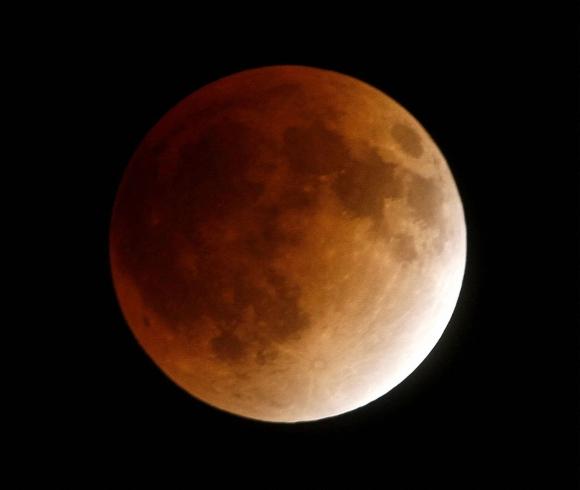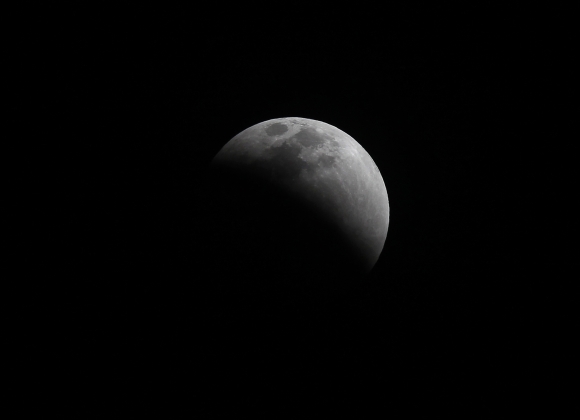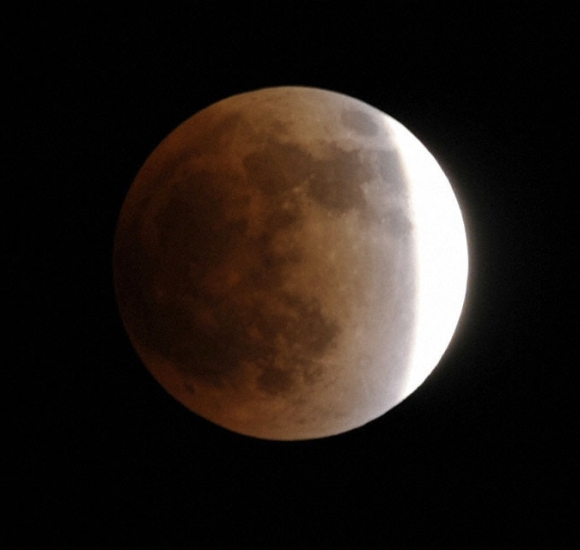
This year's last total lunar eclipse on Saturday presented a celestial spectacle for people all over the country, including those in the national capital, in the pre-dusk hours.
In a clear sky over Delhi, the full moon slowly slipped into the earth's darker shadow, starting just after 5.02 pm.
"The lunar eclipse started at 5:02 pm and could be seen with naked eyes," Director of Nehru Planetarium N Rathnasree said.

Astronomy enthusiasts and sky-gazers gathered at the Nehru Planetarium and India Gate to watch the moon's bright white glow giving way to a cerise red.
Amateur Astronomers Association, in association with the Nehru Planetarium, had set up telescopes and cameras to enable people to watch and take photographs of the celestial phenomenon.

"It was a memorable experience. I saw the moon slipping into the darker shadow," said Shreyansh, a school student.
The maximum eclipse was seen at 8:01:50 pm IST.
While the noticeable Umbra phase began at 6.15 pm, it ended at 9.48 pm.

The sunlight passing through the earth's atmosphere gave the lunar surface a deep reddish hue.
A lunar eclipse occurs when the earth, in the course of its orbit around the sun, comes between the moon and the sun in such a way that the moon is hidden in the shadow cast by earth.

This can occur only when the sun, earth and moon are aligned in a straight line, said C B Devgun of Science Popularisation Association of Communicators and Educators.
People living in eastern Africa, the Middle East, central Asia and western Australia were able to watch the entire eclipse, from beginning to end, said Arvind Paranjpye, scientific officer of Inter-University Centre for Astronomy and Astrophysics.
